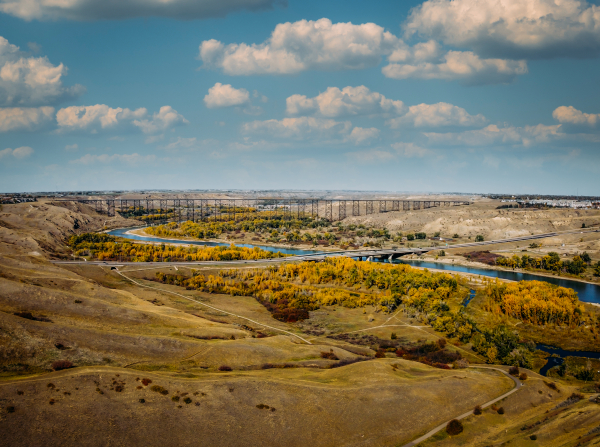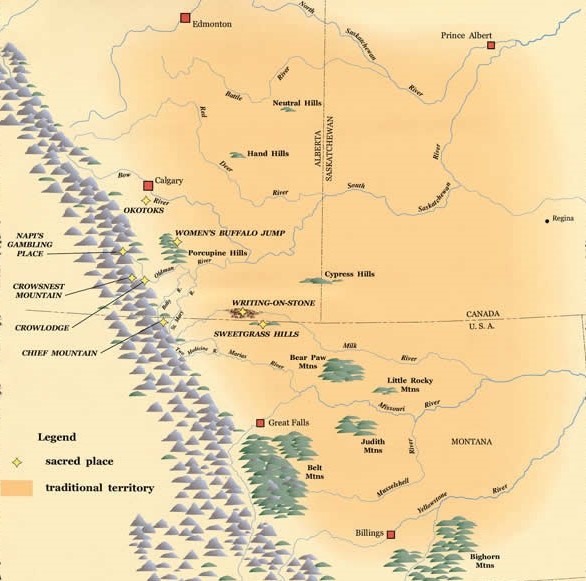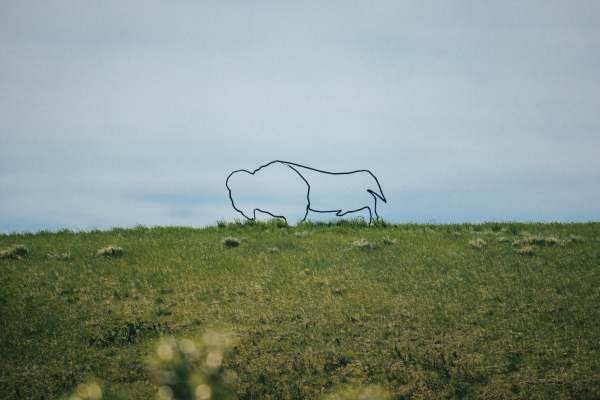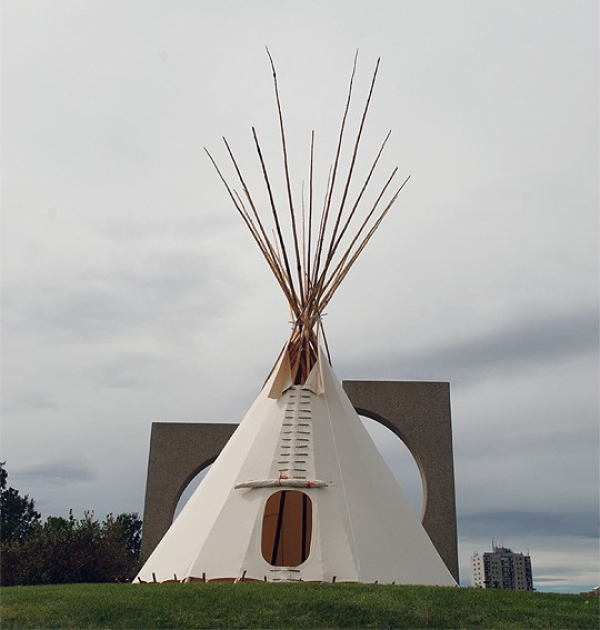Living and Working on Niitsitapi Land
Explore what it means to share space on Blackfoot land and the responsibilities we share as a campus community to respect, honour, and include Indigenous ways of knowing in all that we do.
Lethbridge sits within Treaty 7 Territory and is home of the Niitsitapi or Blackfoot Confederacy, which includes the the Siksika, Kainai, and Piikani peoples. Lethbridge is situated adjacent to the Kainai Reserve, the largest in Canada. This region is also part of the Metis Nation of Alberta Region 3. Lethbridge is home to many Indigenous and Metis individuals from across Turtle Island.
Our University’s Blackfoot name is Iniskim, meaning Sacred Buffalo Stone, and was gifted to us by Elder Bruce Wolf Child in 2002. The University of Lethbridge acknowledges and deeply appreciates the Niitsitapi peoples’ connection to their territory. We, as people living and benefiting from Blackfoot Confederacy territory, hold the responsibility to honour the traditions and ways of knowing of the peoples who have cared for this land since time immemorial and who continue to do so. We recognize the diverse population of Indigenous, Metis, and Inuit peoples who attend the University of Lethbridge and the contributions these Aboriginal peoples have made in shaping and strengthening the University community in the past, present, and in the future.
To learn more about the Blackfoot people and what it means to live and work on Niitsitapi territory, visit:
Iikaisskini Indigenous Services
The History and Importance of Blackfoot Territory
In their article, The History and Importance of Blackfoot Territory, Rebecca Many Grey Horses speaks to the rich history of this region and the peoples who have called it home since time immemorial. The information below has been adapted from this article in order to share this history with you, with the hopes of enriching your knowledge of this region and the importance of Blackfoot ways of knowing to our institution.
Ksahkominoon is the Niitsitapi word for the land now known as the traditional territory of the Blackfoot peoples. This territory extends along the eastern side of the Rocky Mountains, from the Yellowstone River in southern Montana to the North Saskatchewan River in Canada, and east into Saskatchewan.


"The Nitistapii (Blackfoot) believe they have always lived in this area since time immemorial and their history speaks of their creation, stories, and constant relationship to the land. The Blackfoot continue to live today, as they always have, on what continues of their ancestral homeland."
"The Southern Alberta camp locations were selected for the resources that provided food, shelter, and tools. The Blackfoot Siksika, who camped in the area known as the Saskatchewan River, occupied the most northerly part of the Territory. The Kainai, favored the areas east, which were the Cypress Hills for their summer, where the buffalo were plentiful. Their winter camps were on the Belly River, the Highwood, and along the Porcupine Hills. To the south, the Blackfeet Ammskapikunii, occupied the area, as far south to the Yellowstone. The area known today as Sikookotoki (Lethbridge) was a favored location for winter camps along the Old man river that would provide shelter, wood, and water."
(Photo Credit: Glenbow Museum)


"The yearly cycle seasonal rounds of the Nitistapii is divided into four seasons; Winter, Spring, Summer and Fall. In the days when the buffalo were still plentiful, the patterns of movement indicated the location of important foods. To an onlooker, the changes in camp locations through the year may appear unplanned, but they were far from that. Each location was known for the resources it held, whether they were plant, animal, or mineral, and year after year, the people returned to these locations."
"The remains of tipi rings, effigies, buffalo jumps, and other artifacts are still scattered on throughout the landscape of Southern Alberta, which are our remaining connections to ancient Blackfoot history. Blackfoot Territory still holds the memories of Blackfoot ancestors and their bones are entrenched in the lands. The sacred sites, hunting and gathering places, are still identified through the legends and Napi stories, which keep that deep connection to the land for the Blackfoot people."
- Rebecca Many Grey Horses
